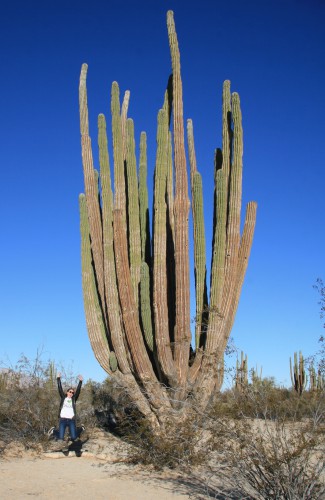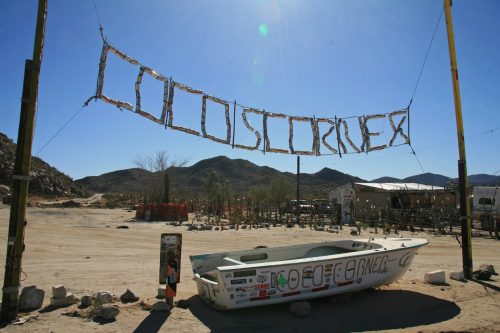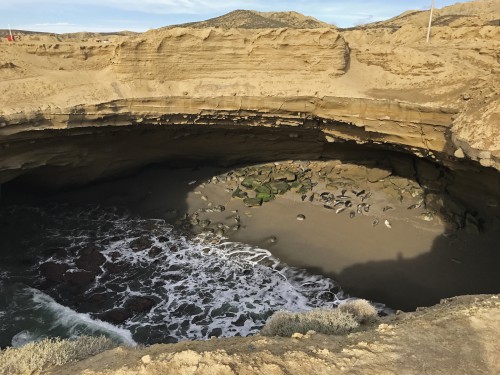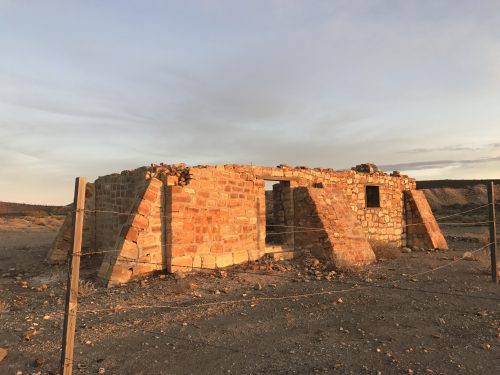The idiosyncrasies of Baja California come alive in the pit stops just off the highway located between the major destinations and towns. Here are some of our favorite stops to check out on your next road trip down the peninsula. After all, life is about the journey, not the destination.
Valle de los Gigantes
Where: Mexico 5, km 14, south of San Felipe
Why We Love it: While there’s no lack of cacti on the peninsula, the cardón cacti in the Valle de los Gigantes are particularly impressive, growing up to heights of 60 feet tall and weighing up to 25 tons. Some of these prickly giants are over 100 years old. Four-wheel drive vehicles are required to explore the entire park by car, but even those without four-wheel drive can explore part of the park, and you can always walk around on foot as well. This is one of the best spots on the peninsula for easy access to the giant cacti, providing the perfect photo opp.
DBTC Insider Tip: The cardón cacti of this region are so unique that one cactus was transported to Spain for the world’s fair in 1992.
Coco’s Corner
Where: Mexico 5, 35 kilometers south of Bahía San Luis Gonzaga
Why We Love It: It’s hard to miss Coco’s Corner, a roadside institution located in the middle of nowhere along Mexico 5. If the chime of hundreds of empty beer cans rattling in the wind doesn’t alert you, the sight of said beer cans covering Coco’s compound will definitely draw your attention. The seemingly haphazard structure is decorated with empty beer cans and filled with off-road stickers plastered on the walls and signed underwear hanging from the ceiling. Stop for a cold beer, to chat with the owner Coco, and the opportunity to check out one of Baja’s quirky desert legends.
DBTC Insider Tip: Coco is one of the peninsula’s most famous icons and has been living there for over 30 years, chronicling all of the visitors who stop by. Ask to see his famous book (he’s filled many of them) with the signatures of people who have passed through and a log of their vehicles.
La Lobera
Where: Mexico 1, Km. 47, south of San Quintín
Why We Love It: Just 10 minutes on the dirt road off of the highway (follow the power lines), visitors will find La Lobera, a harbor seal crater along the coast. The ceiling of a cave collapsed and created a circular space overlooking the sea and beach where harbor seals enjoy sunbathing and playing. There’s a viewing deck that was constructed for visitors to peek down upon the harbor seals. The coastline here is rugged and beautiful, making the trip out to La Lobera worthwhile even if just for the sights.
DBTC Insider Tip: Contrary to popular belief, the animals at La Lobera are harbor seals, not sea lions. This makes it an even more special and rare opportunity to see these unique marine creatures.
El Marmol Onyx Quarry
Where: Mexico 1, Km. 148, between El Rosario and Cataviña
Why We Love It: Located about 15 kilometers off of the highway, the deserted El Marmol onyx mine still has large slabs of onyx scattered around the area as well as there’s an old schoolhouse built out of blocks of cream onyx. The mine was discovered in the 1890s and was active until 1958. During its operation, the mine shipped onyx around the world to markets in England, Belgium, Asia and the U.S. to be used for mantels, tabletops and smaller decorative items.
DBTC Insider Tip: If you want a peek of the onyx but don’t get a chance to make it out to the old mine, check out the floor of the entrance to the Hotel Misión Cataviña, which is decorated with an ornate inlay of cream onyx from the mine.
Cataviña Cave Paintings
Where: Mexico 1, Km. 176, north of Cataviña
Why We Love It: Located just off the highway, these cave paintings are an easy 10-minute hike, making them some of the most accessible examples of rock art on the peninsula. There are a few signs around in Spanish talking about the history of the region and the indigenous Cochimí who inhabited the area. A path lined with stones and a few arrows pointing the way will lead you up to the vibrant cave paintings, tucked into an overhang on the hillside.
DBTC Insider Tip: In addition to the rock art, this is also a great spot to admire the unique central desert landscape with its cardón cacti, cirios, barrel cacti, and even a few of the rare blue palms which are only found in this region.





